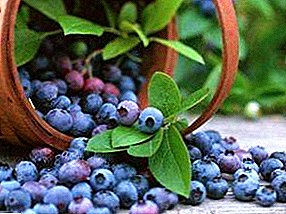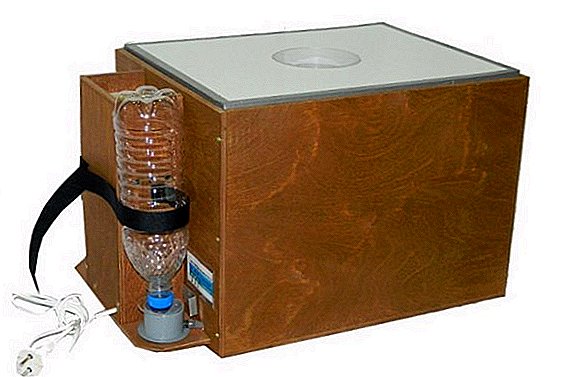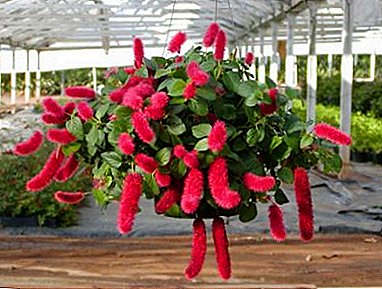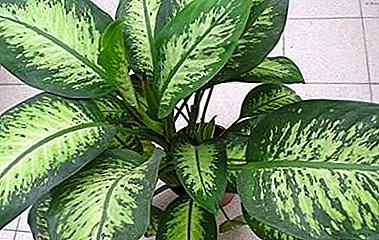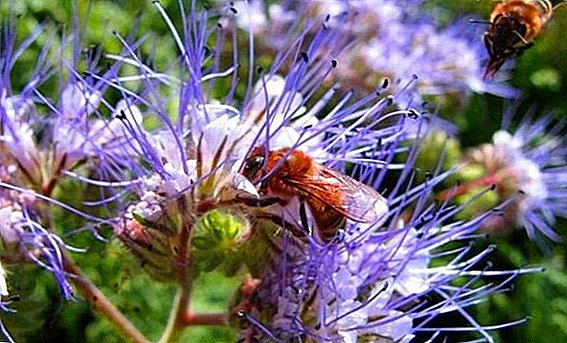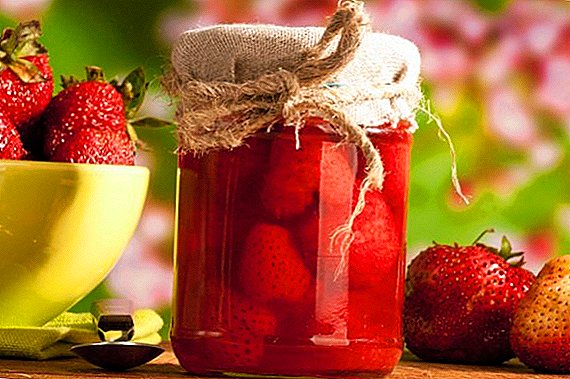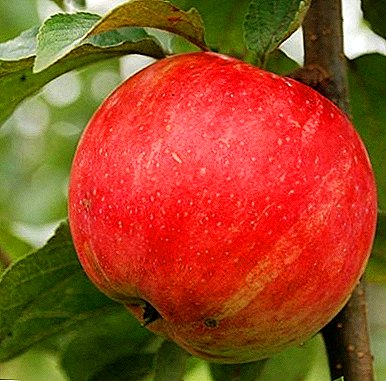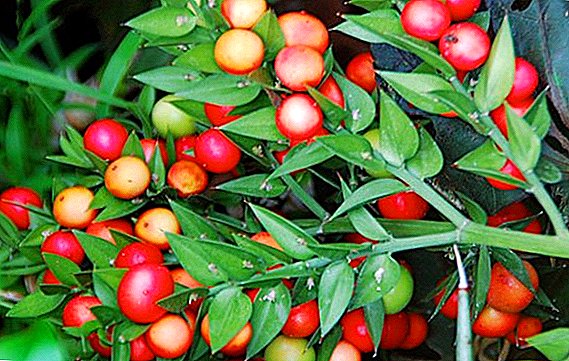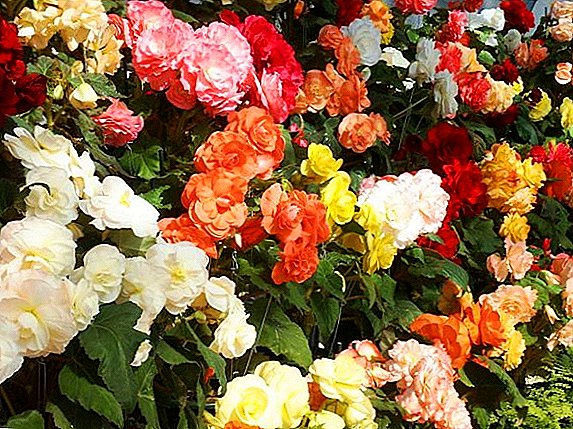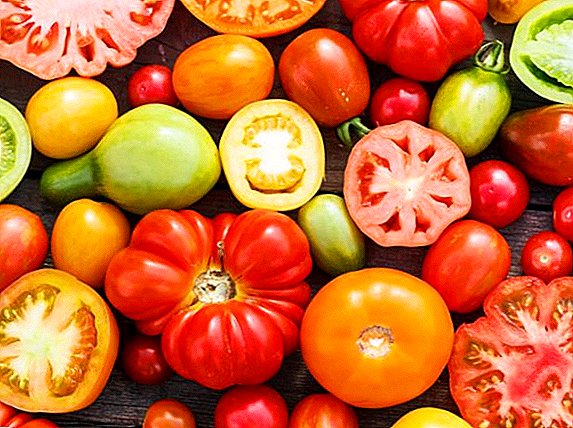 By planting vegetable crops should always be approached in detail. Before planting a plant, you should always find out more information about it, even if we are talking about such a simple and common vegetable for the gardener as a tomato. The selection of seeds and seedlings of this culture is fantastically diverse. Studying the proposed products, it seems that each of them is the best. In the description it is often meant that the varieties are determinantal and indeterminant, let's clarify what this means.
By planting vegetable crops should always be approached in detail. Before planting a plant, you should always find out more information about it, even if we are talking about such a simple and common vegetable for the gardener as a tomato. The selection of seeds and seedlings of this culture is fantastically diverse. Studying the proposed products, it seems that each of them is the best. In the description it is often meant that the varieties are determinantal and indeterminant, let's clarify what this means.
Determinant
Determinant tomatoes are called varieties that stop growing after the formation of fruit brushes. Such tomatoes stop growing up after making 3-5 hands - this is due to the fact that buds are tied at the top. Most often, growth stops at a level not higher than 110 cm in the presence of 4-5 inflorescences. The first inflorescences are laid over 5-6 leaves of a shrub, and subsequent ones - after 2-4 leaves.
Did you know? Translated from the Italian "pomo d'oro" means "golden apple". Surprisingly, these tasty and valuable fruits were considered to be inedible for a very long time and even considered poisonous.
Specialists note the convenience in growing such varieties both in open ground and in small greenhouses.

Determinant varieties are divided into stunted and medium. Low shrubs, or, as they are called, shtambovye, one of the first fruits, the crop ripens in 80-90 days after planting. Srednerosly tomatoes ripen a little later, in about 100-110 days, but they bring more fruits, 5-8 brushes.
Indeterminate
Indeterminate tomato varieties have a completely different feature. This concept means that plants are not limited in growth and can reach an incredible height. This distinctive feature provides for the provision of specific care, on which we will definitely stop separately.
Find out more useful information about growing such tomatoes as: "De Barao", "Persimmon", "Auria", "Katya", "Explosion", "Budenovka", "Golden Heart", "Black Prince", "Cardinal", " Verlioka, Riddle, Siberian Early Maturity, Yamal, Maryina Roshcha, Novoki.
These plants bear fruit much later, and it is recommended to grow them in open ground in the southern regions, since they also differ in heat-loving properties.

Features and differences of cultivation
So, to different varieties require different approaches. In order to get a decent harvest, you should adopt recommendations for planting and growing tomatoes, and then you will surely have a good harvest.
Important! If tomatoes are grown in greenhouse conditions, the seedlings should be ready for transplanting from the container by early May.
Tomatoes are first sown in containers for seedlings, and after the required period they are planted in open ground. The most important thing is to guess with the dates of sowing, since due to too early planting, seedlings can stand up. In this matter, you should rely on your own experience or the recommendations of experts regarding your region, since in different climatic conditions the planting takes place at different times. The age of seedlings is of great importance, for example, the determinant varieties are planted 55-60 days after planting in a container, and the determinant varieties will be ready for planting in the soil in 65-75 days.
To determine the type of future bush can seedlings, so on the determinant tomato the brush will be fastened after the fifth or sixth leaf, and on the indeterminant one after the eighth or tenth. The difference between adult tomatoes is that the determinantal distance between the ovaries is less than three leaves and there is always a brush at the top of the stem, and in the indeterminate tomatoes the distance between the buds is always three leaves.
Important! It is easy to confuse the shrub that was nipped, and mistakenly think that such a plant belongs to the determinant varieties of tomatoes, but in order to avoid this, there is a test method - counting the leaves between the ovaries.
Let's look at the pros and cons of determinant varieties. The advantages of this type are:
- early ripening;
- higher and consistent yield due to a larger number of ovaries;
- Tomatoes ripen almost simultaneously on the entire shrub.

Their disadvantages include the following:
- greater susceptibility to diseases, due to overloading the shrub and reducing the immunity of the plant, it is often sick and requires increased attention;
- more capricious in the care, requires numerous mineral supplements, and you also need to regularly form a shrub, pinching it, usually once a week;
- lower yield per season, because after stopping the growth, the brushes cease to form and, accordingly, the fruits become tied.
Due to the fact that indeterminantny grades differ in high growth and later maturing, they are more often grown up in greenhouses. The advantages of this type of tomato:
- the shrub becomes a tomato tree with proper care;
- high disease resistance;
- the plant does not require compliance with a special temperature and calmly reacts to temperature changes;
- in greenhouse conditions, the fruits ripen all year round, due to this there is a high yield.

Cons of indeterminate tomatoes:
- ripen much later, so it is advisable to plant them in the southern regions or in greenhouses;
- it is necessary to regularly form bushes;
- growing unrestricted in the growth of shrubs of tomatoes implies the presence of support and garter stalk, that is, the additional cost of time and labor.
Did you know? Scientists have not made a decision on what it is more appropriate to attribute tomatoes to vegetables or fruits. In terms of botany, it is generally a berry. In the United States, a court decision fixed the fact that a tomato is a vegetable, and in the EU it is considered a fruit. Most importantly, the lack of consensus does not affect the benefits and taste of tomatoes.
Which tomatoes are preferred depends primarily on climatic conditionsin which they are planned to grow, and the goals that you set. If you need an early harvest, you should choose determinant varieties, if the timing is not as important to you as stability, then you should definitely plant indeterminate tomatoes.


